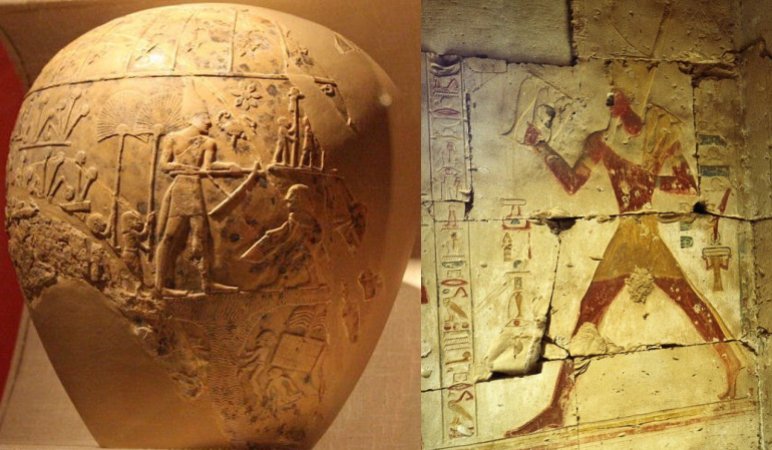Sed Festival – Ancient Egyptian Ritual Tested Pharaohs
Ellen Lloyd - AncientPages.com - Sooner or later every great leader must prove his competency to remain in power. In ancient Egypt, there was a test for pharaohs. Being in good physical condition was a requirement for pharaohs. The Seb festival, also referred to as Heb-Sed or the royal jubilee was celebrated after a pharaoh had ruled for 30 years.
The purpose of the festival was to renew the pharaoh’s potency to rule over the land. During the festival, the pharaoh had to run a fixed course to prove that his fitness was well intact. The Sed festival was one of the oldest and longest-running rituals in Egyptian history.
Left: Mace Head Of King Narmer. Credit: Public Domain - Right: The Sed Festival. Credit: I Like Egypt
It is unknown when the Sed festival took place for the first time, but the first sign of the ancient ritual seems to be documented on the Narmer macehead, an Egyptian artifact dated to the Early Dynastic Period reign of king Narmer. Though it should be stated that some Egyptologists question whether the decoration on this mace head really represents the Heb-Sed ritual.
There is, however, clear evidence that the First Dynasty pharaoh Den and the Third Dynasty pharaoh Djoser participated in the Sed festival.
In the Pyramid of Djoser, built by Imhotep there are two boundary stones in his Heb Sed court, which is within his pyramid complex. He also is shown performing the Heb Sed in a false doorway inside his pyramid.
All pharaohs regardless of gender had to be tested. At Karnak, one of the greatest temple complexes in the world, there are blocks from the reconstructed Red Chapel that show queen Hatshepsut as king, running with the Apis bull between the markers. Depictions found inside the Temple of Aten at Karnak show that pharaoh Akhenaten and his wife, Queen Nefertiti, as well as their daughter, celebrated the Sed festival.
Detail from an ebony label of the First Dynasty pharaoh Den, depicting him running around the ritual boundary markers as part of the Sed festival. Credit: Wikipedia
During this ceremony, the pharaoh made various offerings to the Egyptian gods and was re-crowned. The exact date of the festival is uncertain, but it’s very possible the celebration took place sometime during the Koaik, the fourth month of the Egyptian calendar.
Egyptologists have suggested that the Heb-Sed festival may have been introduced to replace a ritual of murdering a pharaoh who was unable to continue to rule effectively because of age or condition.
Although the Seb festival was held after a pharaoh had been on the throne for 30 years, there is evidence that some rulers, including those with relatively short reigns, celebrated their royal jubilee earlier. Egyptologists think that a ruler with bad health could alter the normal span between the Sed festivals.
Written by Ellen Lloyd – AncientPages.com
Copyright © AncientPages.com All rights reserved. This material may not be published, broadcast, rewritten or redistributed in whole or part without the express written permission of AncientPages.com
More From Ancient Pages
-
 Famine And Disease Drove The Evolution Of Lactose Tolerance In Europe
Archaeology | Jul 27, 2022
Famine And Disease Drove The Evolution Of Lactose Tolerance In Europe
Archaeology | Jul 27, 2022 -
 Nomenclator: Ancient Living-Human Calendar And Address Book
Ancient History Facts | Jul 4, 2018
Nomenclator: Ancient Living-Human Calendar And Address Book
Ancient History Facts | Jul 4, 2018 -
 Hopi’s Encounter With Maasaw – The Skeleton Man And His Gift Of Sacred Knowledge
Myths & Legends | May 5, 2017
Hopi’s Encounter With Maasaw – The Skeleton Man And His Gift Of Sacred Knowledge
Myths & Legends | May 5, 2017 -
 Queen Dido Of Carthage: Founder Of Prosperous City On Africa’s Northern Coast
Featured Stories | May 21, 2020
Queen Dido Of Carthage: Founder Of Prosperous City On Africa’s Northern Coast
Featured Stories | May 21, 2020 -
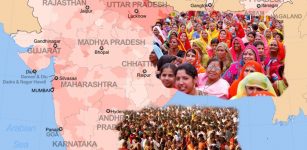 People Of India In Focus: Where Did They Come From?
Civilizations | May 11, 2017
People Of India In Focus: Where Did They Come From?
Civilizations | May 11, 2017 -
 Jade Emperor – Supreme Ruler Of Heaven In Chinese Mythology
Chinese Mythology | Feb 21, 2019
Jade Emperor – Supreme Ruler Of Heaven In Chinese Mythology
Chinese Mythology | Feb 21, 2019 -
 On This Day In History: Amelia Earhart, Most Famous Female Pilot – Disappeared Over The Pacific Ocean – On July 2, 1937
News | Jul 2, 2016
On This Day In History: Amelia Earhart, Most Famous Female Pilot – Disappeared Over The Pacific Ocean – On July 2, 1937
News | Jul 2, 2016 -
 Legendary Beowulf Fighting Dragon Grendel In Heroic Poem Written In Anglo-Saxon England
Featured Stories | Aug 14, 2022
Legendary Beowulf Fighting Dragon Grendel In Heroic Poem Written In Anglo-Saxon England
Featured Stories | Aug 14, 2022 -
 Highly Debated Early Homo Erectus Skull From Turkana – Age And Origin Now Verified
Archaeology | Apr 20, 2021
Highly Debated Early Homo Erectus Skull From Turkana – Age And Origin Now Verified
Archaeology | Apr 20, 2021 -
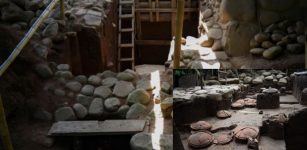 2,000-Year-Old Stela And ‘Laboratory’ Of Early Maya Writing Found In Guatemala
Archaeology | Mar 15, 2020
2,000-Year-Old Stela And ‘Laboratory’ Of Early Maya Writing Found In Guatemala
Archaeology | Mar 15, 2020 -
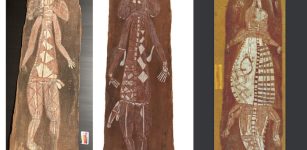 Solving The Bark Painting Mystery In Australia
Archaeology | Feb 23, 2023
Solving The Bark Painting Mystery In Australia
Archaeology | Feb 23, 2023 -
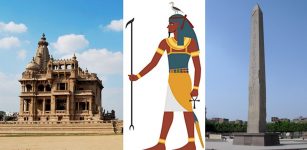 Geb – Egyptian God Of Earth And Member Of The Ennead – His Laughter Created Earthquakes
Egyptian Mythology | Feb 12, 2019
Geb – Egyptian God Of Earth And Member Of The Ennead – His Laughter Created Earthquakes
Egyptian Mythology | Feb 12, 2019 -
 Migration Of Early Humans Out Of Africa Began Thousands Of Years Earlier Than Previously Thought
Archaeology | Dec 18, 2017
Migration Of Early Humans Out Of Africa Began Thousands Of Years Earlier Than Previously Thought
Archaeology | Dec 18, 2017 -
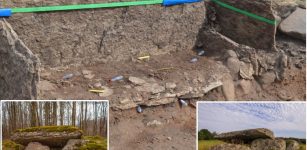 Mystery Of The Unique Tiarp Dolmen – One Of Oldest The Stone Burial Chambers In Scandinavia
Archaeology | Jan 30, 2024
Mystery Of The Unique Tiarp Dolmen – One Of Oldest The Stone Burial Chambers In Scandinavia
Archaeology | Jan 30, 2024 -
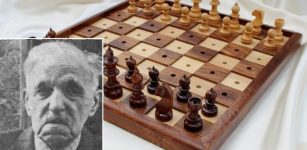 On This Day In History: Reginald Walter Bonham Was Born – On Jan 31, 1906
News | Jan 31, 2017
On This Day In History: Reginald Walter Bonham Was Born – On Jan 31, 1906
News | Jan 31, 2017 -
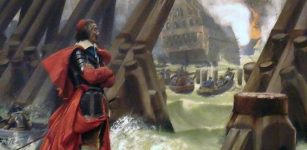 Cardinal Richelieu ‘Red Eminence’ – One Of The Greatest Politicians In French History
Featured Stories | Oct 26, 2018
Cardinal Richelieu ‘Red Eminence’ – One Of The Greatest Politicians In French History
Featured Stories | Oct 26, 2018 -
 Virtual Nubia: Sudan’s Medieval Monasteries Digitally Reconstructed By Polish Archaeologists
News | Oct 8, 2020
Virtual Nubia: Sudan’s Medieval Monasteries Digitally Reconstructed By Polish Archaeologists
News | Oct 8, 2020 -
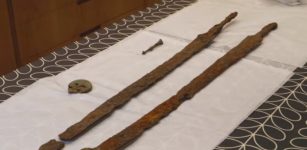 Unique Ancient Roman Cavalry Swords Found In Cotswolds, UK
Archaeology | Sep 18, 2023
Unique Ancient Roman Cavalry Swords Found In Cotswolds, UK
Archaeology | Sep 18, 2023 -
 Ancient Mystery Of America’s Missing Metal – Can The Answer Be Found In Ancient Europe?
Ancient Mysteries | May 18, 2018
Ancient Mystery Of America’s Missing Metal – Can The Answer Be Found In Ancient Europe?
Ancient Mysteries | May 18, 2018 -
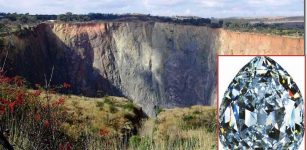 On This Day In History: 3,106-Carat Diamond Found – On Jan 25, 1905
News | Jan 25, 2017
On This Day In History: 3,106-Carat Diamond Found – On Jan 25, 1905
News | Jan 25, 2017

